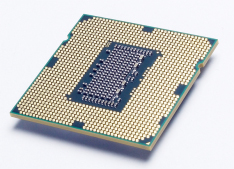Could playing in the dirt make you smarter? Mice given peanut butter laced with a common, harmless soil bacterium ran through mazes twice as fast and enjoyed doing so.
So says Dorothy Matthews of the Sage Colleges in Troy, New York state, who presented her results at the annual meeting of the American Society for Microbiology in San Diego, California, this week.
In a classic test of learning ability, Matthews gave mice a treat – white bread with peanut butter – as a reward to encourage them to learn to run through a maze. When she laced the treat with a tiny bit of Mycobacterium vaccae, she found that the mice ran through the maze twice as fast as mice that were given plain peanut butter. This suggests that they had learned to navigate the maze faster, Matthews says.
Moreover, the mice given the bacteria continued to run the maze faster than those without it for 18 more trials over the next six weeks, showing they weren't just made more alert by a surprise change to their treat. This effect lasted for four weeks after the last piece of doctored peanut butter was given to the mice.
Speedy solvers
Matthews believes this was caused by the effect M. vaccae has on the immune system, something that was investigated in 2007 by Chris Lowry, now at the University of Colorado at Boulder.
Lowry was trying to explain why sick people – who have activated immune systems – often become depressed and sluggish, which could be an adaptation that speeds recovery.
His team found that exposing mice to the bacteria, and hence activating their immune system, activated clusters of neurons in their brainstem called the dorsal Raphe nuclei. These neurons connect to the forebrain and other brain structures that regulate mood and behaviour.
This result led Matthews to investigate whether the bacteria's effect on the brain extended to a more general difference in cognitive function – and she found that it did.
Focus on that maze
The bacteria may speed up learning because the Raphe nuclei stimulate a brain region called the hippocampus, which handles spatial memory, she says.
But the bacteria also changed the mice's mood – they showed less behaviour that indicates anxiety, such as grooming and searching, perhaps analogous to the calmer behaviour immune activation triggers in people.
This is likely to have been caused by changes to the higher mental functions in the forebrain, which perhaps allowed them to focus better on the maze.
Matthews says that exposure to soil bacteria may affect human brains too. "It just shows that we evolved with dirt as hunter-gatherers," she says. "So turn off your TV and go work in your garden, or walk in the woods."
Journal Reference: Neuroscience, DOI: 10.1016/j.neuroscience.2007.01.067
 New Scientist reports, explores and interprets the results of human endeavour set in the context of society and culture, providing comprehensive coverage of science and technology news.
New Scientist reports, explores and interprets the results of human endeavour set in the context of society and culture, providing comprehensive coverage of science and technology news.












